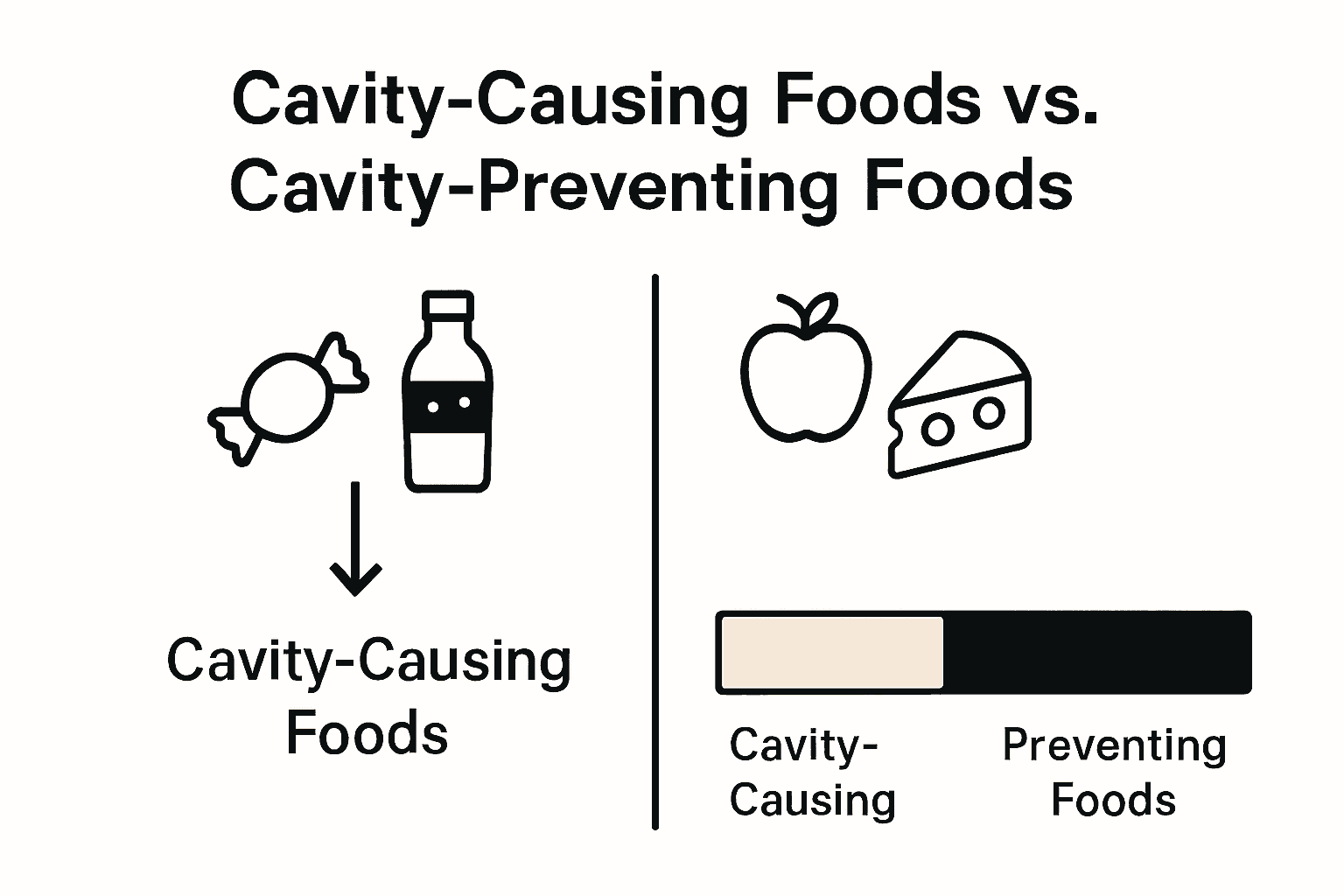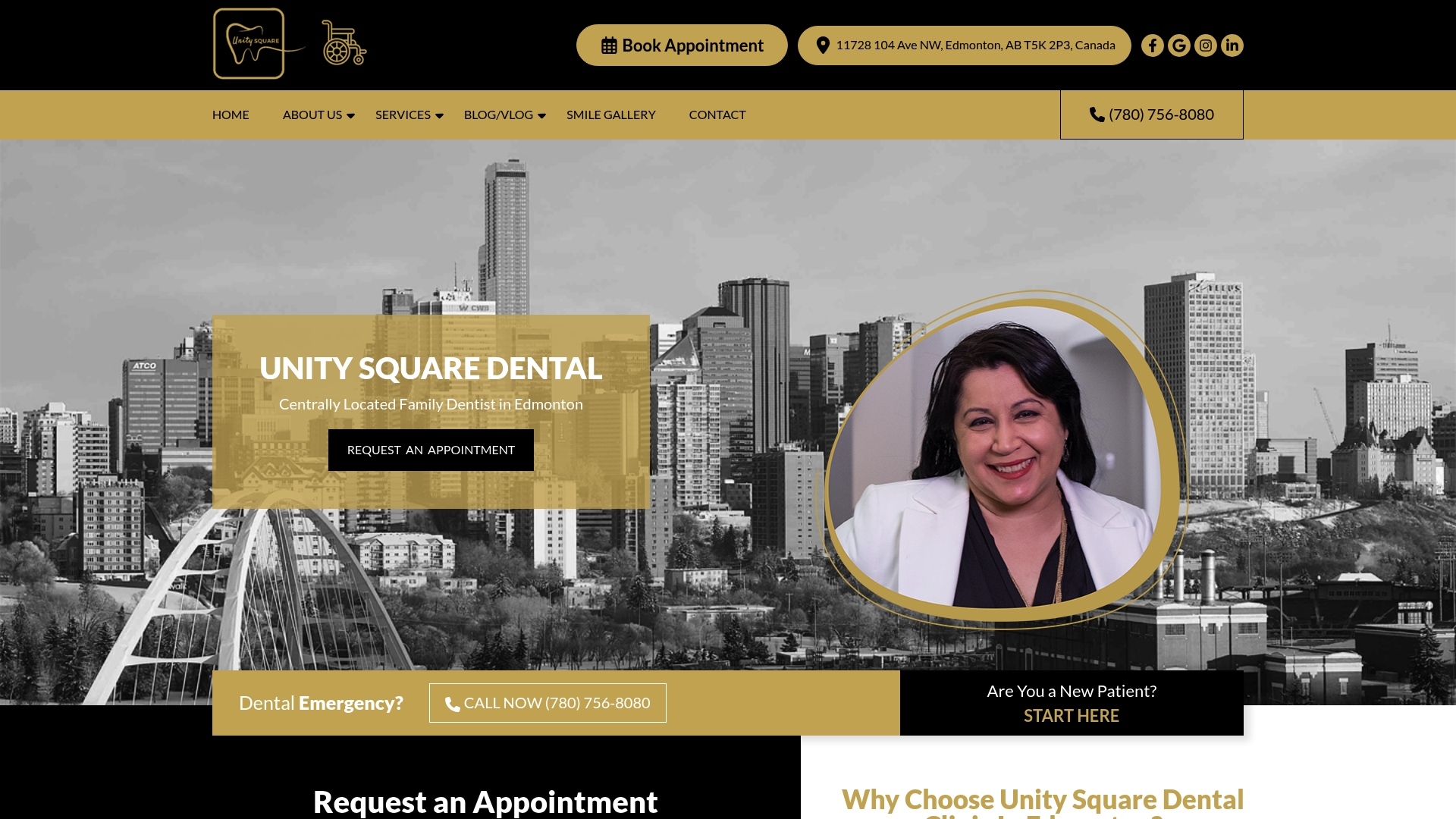
Over half of adults admit they skip steps in their dental routine, often without realizing the risks involved. Oral health directly affects more than just your smile—it can impact everything from daily comfort to long-term wellbeing. If you want to prevent cavities naturally, learning how to fine-tune your habits puts you in control. Here, you’ll find practical strategies that help you build stronger, healthier teeth for life.
Table of Contents
- Step 1: Assess Your Current Oral Hygiene Habits
- Step 2: Upgrade Your Daily Cleaning Routine
- Step 3: Optimize Your Diet For Stronger Teeth
- Step 4: Schedule Regular Dental Check-Ups
- Step 5: Monitor Your Progress And Adjust Techniques
Quick Summary
| Key Point | Explanation |
|---|---|
| 1. Assess your oral hygiene routine | Evaluate your current dental care practices to identify improvement areas for cavity prevention. |
| 2. Upgrade your cleaning tools | Invest in high-quality toothbrushes and develop effective brushing and flossing techniques for better dental health. |
| 3. Optimize your diet for dental health | Reduce sugar and acidic food intake; focus on tooth-friendly options like dairy, vegetables, and water. |
| 4. Schedule regular dental check-ups | Commit to visits every six months for early detection of potential dental issues and professional cleaning. |
| 5. Monitor your oral health progress | Keep a dental journal to track habits and changes, seeking professional advice for technique adjustments. |
Step 1: Assess Your Current Oral Hygiene Habits
To prevent cavities naturally, you first need an honest assessment of your current oral hygiene routine. This step involves carefully examining your daily dental care practices and identifying areas where you can make meaningful improvements. According to research examining oral health behaviors PubMed, many people have significant gaps in their understanding and implementation of proper oral hygiene.
Start by tracking your current habits. Pull out a notebook or use your smartphone to document your daily dental routine. Answer these key questions: How often do you brush your teeth? Are you using proper brushing techniques? Do you floss regularly? What is the condition of your toothbrush? Are you replacing it every three to four months? Understanding these details will help you create a personalized strategy for cavity prevention.

A critical warning many people overlook is the importance of thoroughness in your oral care routine. Brushing for just 30 seconds or skipping flossing might seem harmless, but these small shortcuts can lead to significant dental health issues. Remember that preventing cavities is about consistent, quality care. By taking time to honestly assess your current habits, you are already taking the first important step toward better dental health.
In the dental hygiene checklist available on our website, you can find additional resources to help refine your oral care approach and ensure you are on the right track.
Step 2: Upgrade Your Daily Cleaning Routine
Improving your daily dental cleaning routine is essential for preventing cavities and maintaining overall oral health. Recent research PMC among university students demonstrates that strategic upgrades to oral hygiene practices can significantly impact dental wellness. This step will help you transform your current routine into a more effective cavity prevention strategy.
Start by investing in high-quality tools that support thorough cleaning. Choose a soft bristled toothbrush with a comfortable grip and fluoride toothpaste. Develop a systematic brushing technique: hold your brush at a 45 degree angle to your gums, use gentle circular motions, and spend at least two minutes covering all tooth surfaces. Brush your teeth twice daily and focus on thoroughly cleaning each quadrant of your mouth for 30 seconds. Consider adding an electric toothbrush if you struggle with consistent manual brushing technique.
As research from Saudi Arabian studies highlights, proper technique matters more than frequency.
Flossing is equally crucial, so commit to daily flossing to remove plaque between teeth where your brush cannot reach. When understanding how often to brush teeth naturally, remember that consistency and thoroughness are your greatest allies in preventing tooth decay.
Warning: Avoid aggressive brushing, which can damage tooth enamel and gum tissue. Gentle, methodical cleaning is far more effective than hard scrubbing.
Step 3: Optimize Your Diet for Stronger Teeth
Strengthening your teeth through dietary choices is a powerful strategy for preventing cavities naturally. Research from PubMed demonstrates a clear connection between food consumption and dental health, particularly highlighting how certain dietary habits can significantly impact tooth decay risk among children and adults alike.
Start by reducing your intake of sugar and acidic foods. These are primary culprits in tooth decay. Replace sugary snacks with tooth friendly alternatives like crunchy vegetables, nuts, and dairy products rich in calcium. When selecting teeth friendly snacks, prioritize foods that naturally clean your teeth and provide essential minerals. Incorporate more leafy greens, cheese, plain yogurt, and lean proteins into your meals. These foods help neutralize acids in your mouth and provide nutrients that support tooth remineralization.

As research from pediatric dental studies suggests, consistent dietary choices play a crucial role in maintaining oral health. Drink plenty of water throughout the day to help wash away food particles and maintain saliva production. This natural mechanism helps protect your teeth from harmful bacteria. Consider adding green and black teas to your diet. They contain polyphenols that can help reduce bacteria growth and limit acid production in your mouth.
Warning: Avoid frequent snacking, especially on sugary or starchy foods. Each time you eat, your teeth are exposed to potential acid attacks that can weaken enamel. Instead, aim for balanced meals and limit snacking to preserve your dental health.
Step 4: Schedule Regular Dental Check-Ups
Regular dental check-ups are your frontline defense against cavity development and overall oral health maintenance. Research from PMC confirms that consistent dental visits are crucial for detecting and preventing potential dental issues before they escalate, especially for individuals with underlying health conditions.
Begin by establishing a proactive dental visit schedule. Most dental professionals recommend check-ups every six months, but your specific needs might vary. When exploring how often to visit the dentist, consider factors like your age, existing dental health, medical history, and personal risk factors. During these appointments, expect comprehensive examinations including professional cleaning, x-rays, oral cancer screenings, and personalized advice for your dental hygiene routine.
Studies among dental students PMC highlight the significant correlation between routine check-ups and improved oral health outcomes. Schedule your appointments during less stressful times when you can remain relaxed and fully engage with your dental professional. Many dental offices offer online booking or reminder systems to help you stay consistent.
Warning: Do not postpone dental check-ups even if you feel your teeth are healthy. Early detection of potential issues can save you from expensive and extensive treatments later.
Step 5: Monitor Your Progress and Adjust Techniques
Tracking your oral health progress is crucial for ensuring long term cavity prevention and maintaining a healthy smile. Research from pediatric dental studies emphasizes the importance of continuously monitoring and adapting your oral hygiene techniques to achieve optimal dental wellness.
Begin by creating a simple tracking system for your oral health journey. Keep a dental journal where you document your daily brushing and flossing routine, noting any changes in your teeth or gums. Use your smartphone to take periodic photos of your teeth to visually track improvements. Pay attention to indicators like reduced plaque buildup, healthier gum color, and decreased tooth sensitivity. When developing 10 essential steps for your oral hygiene checklist, consider creating a personalized scorecard to measure your progress.
Consult with your dental professional during regular check-ups to get expert insights into your oral health progress. They can provide specific recommendations for adjusting your techniques based on your individual dental anatomy and potential risk factors. Some key areas to discuss include your brushing technique, flossing frequency, diet modifications, and any emerging dental concerns.
Warning: Do not become discouraged if progress seems slow. Oral health is a continuous journey that requires patience and consistent effort. Small improvements accumulate over time to create significant long term benefits.
Take Control of Your Smile and Prevent Cavities Naturally Today
Struggling to maintain a cavity-free smile can feel overwhelming when you do not know if your daily brushing or flossing routine is enough. This guide helps unveil the importance of consistent, thorough oral care and diet choices that support cavity prevention. If you want to transform your dental health with proven strategies and expert support, you do not have to do it alone.

Experience personalized care tailored to your oral health needs at Unity Square Dental, where advanced dental technology meets a family-focused approach. Whether you need guidance on improving your brushing technique, professional cleanings for early cavity detection, or advice on a tooth-friendly diet, our Edmonton clinic provides accessible, compassionate solutions to keep your smile healthy. Take the first step toward lasting dental wellness by booking an appointment now at Unity Square Dental – because your smile deserves dedicated care you can trust.
Frequently Asked Questions
How can I assess my current oral hygiene habits to prevent cavities naturally?
To assess your current oral hygiene habits, track your daily dental routine by noting how often you brush, your brushing techniques, and your flossing frequency. Start by writing these details down for at least one week to identify areas for improvement.
What upgrades can I make to my daily dental cleaning routine to prevent cavities?
You can upgrade your routine by using a soft-bristled toothbrush and fluoride toothpaste, and by brushing for at least two minutes, twice a day. Commit to flossing daily to reach areas your toothbrush can’t clean, which can significantly enhance your cavity prevention efforts.
Which dietary changes can help strengthen my teeth and prevent cavities naturally?
To strengthen your teeth, reduce your intake of sugary and acidic foods, and replace them with tooth-friendly options like crunchy vegetables and dairy rich in calcium. Aim to incorporate these healthier choices into most of your meals to promote better oral health.
How often should I schedule dental check-ups to effectively prevent cavities?
Most dental professionals recommend scheduling check-ups every six months to catch potential issues early. Adjust this frequency based on your individual dental needs and risk factors, but maintain consistency for optimal results.
What should I do to monitor my progress in preventing cavities?
Monitor your progress by keeping a dental journal where you log your brushing and flossing habits along with any changes in your dental health. Review this journal regularly and discuss your findings with your dentist during your appointments for tailored advice.
How can I stay motivated in my journey to prevent cavities naturally?
Stay motivated by tracking small improvements in your oral health and celebrating your progress, such as healthier gum color or reduced plaque buildup. Create a simple scorecard to visualize your achievements and set measurable goals to keep yourself on track.
Recommended
- Preventing Tooth Decay Naturally: A Step-by-Step Guide – Unity Square Dental
- Causes of Tooth Decay: Complete Guide for Families – Unity Square Dental
- 10 Teeth Friendly Snacks for Healthy Smiles – Unity Square Dental
- Understanding the Connection Between Diet and Dental Health – Unity Square Dental
- Preventive Dental Care for Adults | Dental Atelier

